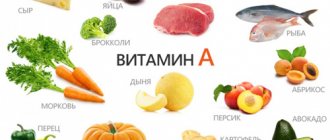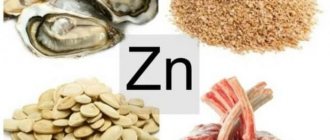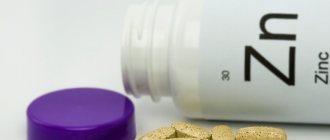Biological role of vitamin C
The role of ascorbic acid is great for the whole organism. Let's name the main functions of the vitamin:
- An excellent antioxidant. The substance blocks the destructive process of lipid oxidation in tissues, and also slows down aging and protects against diseases.
- Strengthens the immune system, making it more resistant to harmful microorganisms, especially viruses.
- Strengthens joints and bones, improves the formation of connective tissue.
- Promotes better absorption of folic acid, vitamins A and E, as well as iron, making these components more active.
- Improves the condition of the skin. By counteracting harmful organisms, it reduces the appearance of pimples and acne.
- Strengthens blood vessels and reduces bleeding.
- Stops the growth of cholesterol plaques, slows down the development of atherosclerosis.
- Neutralizes many toxic substances, including tobacco smoke, alcohol and drug metabolites. Promotes detoxification of the body.
- Reducing the impact of stress on the human body.
- Promotes faster healing of damaged tissues.
- Characterized by a brightening effect on the skin.
ROLE OF ASCORBIC ACID IN THE HUMAN BODY
Ascorbic acid is a strong reducing agent and takes an active part in many biochemical processes necessary for the normal functioning of the human body. Among them:
- metabolism of proteins and amino acids;
- collagen synthesis;
- activation of enzymes;
- stimulation of the synthesis of specific components of cartilage tissue;
- formation of bile acids;
- biosynthesis of corticosteroid hormones;
- activation of hematopoiesis and regenerative processes;
- increased iron absorption;
- suppression of the formation of carcinogens.
Vitamin C deficiency: signs
In order for vitamins to have a positive effect on the human body, they must be contained in it in optimal quantities, without exceeding or decreasing the norm. Let's first look at the signs of ascorbic acid deficiency:
- A significant decrease in protective functions, a person’s illness (usually such people do not have time to cure one disease before another “clings” to them).
- The course of the disease becomes more complicated and its duration increases.
- Young children with ascorbic acid deficiency may lag behind their peers in development (both physically and mentally).
- Increased irritability or, conversely, apathy towards everything, lack of emotion.
- Painful sensations in the joints, discomfort even with normal movements.
- Memory impairment.
- Fragility of the joints, which is manifested by the appearance of hematomas in the muscle, skin and subcutaneous tissues.
- Bleeding gums.
- Increased bleeding from the nasal cavity.
- Development of caries.
- Anemia.
- Jumps in blood pressure and heart rate.
- Swelling of the joints.
- Scurvy (indicates a high vitamin C deficiency). Subsequently, ulcers appear that do not go away for a long time.
- Infectious complications that, if left untreated, can develop into sepsis or even result in death.
What it is
Vitamin C or ascorbic acid is water-soluble. This means that it easily dissolves in body fluids and, with a small excess, is excreted in the urine.
Vitamin C helps synthesize collagen, a protein that is responsible for the condition of skin, hair, cartilage and blood vessels. Ascorbic acid is also involved in the formation of serotonin, the hormone of happiness.
The daily requirement of vitamin C for men is 90 mg, and for women - 75 mg. Usually, in the absence of it in the diet, symptoms of hypovitaminosis may appear - bleeding gums, lethargy, dry skin and eyes. But in today's realities, it is almost impossible to get hypovitaminosis or even vitamin deficiency. Even if the diet is very limited, many foods contain ascorbic acid as an acidity regulator.
It is generally accepted that there is a lot of it in citrus fruits, but in fact there is even more in rose hips, currants and cabbage. By the way, vitamin C is needed only by humans, primates and some species of birds and guinea pigs - nature has approached its distribution selectively.
Signs of excess vitamin C
You cannot exceed the recommended level of ascorbic acid in the body, since this is also harmful to human health.
Hypervitaminosis of ascorbic acid is manifested by the following unpleasant symptoms:
- cramps in the stomach;
- severe heartburn;
- nausea and vomiting occurring literally every 30 minutes;
- dizziness that does not go away even after the position has been changed to horizontal;
- weakness and chronic fatigue, but at the same time showing signs of insomnia;
- migraine attacks;
- skin rash;
- diarrhea or constipation.
In children, an overdose of ascorbic acid is manifested by redness of the skin and severe itching. Also, in young patients, nervous excitability increases noticeably, which can even develop into aggressive reactions.
Recently, the feasibility and effectiveness of using vitamins C, D and zinc to prevent coronavirus infection has been discussed quite often. It has been suggested that in large doses they can have a positive effect on the course and outcome of the disease. Is it really? Should we place high hopes on the “modest” ascorbic acid, “sunshine vitamin” and zinc? Associate Professor of the Department of Clinical Pharmacology of BSMU, Candidate of Medical Sciences, shared her view on the problem. Sciences Irina Kozhanova.
Where do vitamins belong?
Irina Kozhanova, Associate Professor, Department of Clinical Pharmacology, BSMU, Candidate of Medical Sciences. sciences. Initially, with the advent of the new coronavirus infection, the scientific medical community had a clear association that COVID-19 is a respiratory infection, i.e. ARVI. Only as we studied the pathogenesis of this disease did we understand that completely different approaches to pharmacotherapy using antiplatelet agents, anticoagulants, immunosuppressants and glucocorticoids are needed than for ARVI. Is there a place for vitamins in this completely different problem from ARVI?
Vitamins are a group of biologically highly active organic substances , mainly of plant origin, which have a regulatory effect on metabolic processes and physiological functions of the body. They are part of coenzymes that provide modulation of certain enzymatic reactions in tissues.
The main source of most vitamins for humans is food. Unlike other nutrients, a person’s daily need for various vitamins is insignificant – from tens of milligrams to their thousandths.
Vitamins are divided into water-soluble and fat-soluble.
Water -soluble vitamins include 9 vitamins: B1 (thiamine), B2 (riboflavin), B5 (pantothenic acid), PP (niacin, nicotinic acid), B6 (pyridoxine), B9 (folic acid), B12 (cobalamin), vitamin C (ascorbic acid). acid), vitamin H (biotin). Water-soluble vitamins are characterized by thermolability, the ability to be destroyed in a basic environment and stability in an acidic environment. They do not accumulate in the body, therefore, the need for them must be satisfied constantly and daily.
Vitamins A (retinol), D (calciferol), E (tocopherol) and K, as well as carotenoids, some of which are provitamin A, are fat- soluble .
They are characterized by thermal stability and resistance to acids and bases. Unlike water-soluble vitamins, fat-soluble vitamins have a cumulative effect and can have a toxic effect in case of overdose.
For the prevention and treatment of COVID-19, the relevance of using vitamins C, D and the microelement zinc was initially considered.
In 2022, scientists from Eastern Virginia Medical School (USA) developed and subsequently widely disseminated a protocol for the management of inpatients with COVID-19. For ease of understanding, let’s call it the “Virginia protocol.” This is, in fact, the only document that more or less clearly describes some doses of vitamins and microelements for COVID-19 during different periods of patient management: for preventive use, outpatient management of patients with mild and moderate cases, and for inpatients.
Zinc for coronavirus infection So, the “Virginia protocol” suggests the following doses:
- for the prevention of infection - 50 mg/day;
- patients with confirmed COVID-19 on outpatient treatment - 75–100 mg/day;
- for inpatient treatment - 75–100 mg/day.
What caused the interest in zinc as an adjuvant for the prevention and treatment of coronavirus infection? There are several suggested criteria.
- 118 zinc-containing proteins in the human body are related to antiviral defense. Of these, 11 proteins are directly related to protection against single-stranded RNA viruses like SARS-CoV-2 and inhibition of the cytokine storm.
- Zinc ions may inhibit coronavirus RNA polymerase, inhibiting viral replication in cell culture.
- There is indirect evidence that zinc may reduce the activity of ACE2 (angiotensin-converting enzyme 2), which is known to be a receptor for SARS-CoV-2.
- Modulation of antiviral immunity by zinc may also limit SARS-CoV-2 infection, at least by enhancing IFNα production and enhancing its antiviral activity.
- Modulation of T cell regulatory functions by zinc may also limit excessive inflammatory responses as well as suppress the production of anti-inflammatory cytokines.
However, over the past year, when the number of studies in this area has noticeably increased, evidence-based medicine has not received data that would clearly indicate the rationality of using zinc in the treatment and prevention of a new coronavirus infection.
Thus, studies have shown that zinc supplementation did not have a positive effect on the course of COVID-19, assessed as survival to hospital discharge and in-hospital mortality. The group receiving zinc had longer lengths of stay in the intensive care unit.
Another large randomized clinical trial (February 2022) found that treatment with high doses of zinc gluconate, ascorbic acid, or a combination of the two supplements did not significantly reduce the duration of symptoms compared with standard treatment.
In summary, there is currently no evidence-based evidence to support regular zinc supplementation in patients with COVID-19, and evidence of benefit is equivocal.
Vitamin C for COVID-19
This is a water-soluble vitamin that must be supplied to our body daily with every meal. The daily requirement of an adult is approximately 90 mg of vitamin C. It is not recommended to exceed the dose of vitamin C per day by more than 1 g. Ingestion of more than 2 g of vitamin C per day can cause gastrointestinal irritation and diarrhea.
Meanwhile, a dose of vitamin C up to 2 g per day in the United States is considered safe. And the European Food Safety Authority states that minimal side effects from the gastrointestinal tract begin to appear only when taking 3-4 g of vitamin C per day.
According to the Virginia Protocol, vitamin C is indicated in the following dosages:
- to prevent COVID-19 infection - 1,000 mg 2 times a day;
- outpatients - 2,000 mg 2-3 times a day;
- inpatients outside the ICU - 500–1,000 mg every 6 hours;
- inpatients in the ICU - 50 mg/kg IV every 6 hours for at least 7 days before transfer from the ICU.
What effects do we expect from vitamin C?
Vitamin C is essential for collagen biosynthesis and is vital for maintaining epithelial integrity.
It also plays an important role in several aspects of immunity (leukocyte migration to sites of infection, phagocytosis and bacterial killing, natural killer cell activity, T cell function (especially CD8+ cytotoxic T cells), and antibody production).
Vitamin C acts as an antioxidant that can scavenge reactive oxygen species, thereby protecting biomolecules (proteins, lipids and nucleotides) from oxidative damage and dysfunction.
As a pleiotropic stress hormone, vitamin C may play a critical role in mediating the adrenal response to stress, especially in sepsis. The concentration of vitamin C in the adrenal glands is 3-10 times higher than in any other organ.
And one more interesting aspect: according to some researchers, vitamin C increases the production of cortisol by the adrenal glands, thereby enhancing the anti-inflammatory and endothelial cytoprotective effects of glucocorticoids. Moreover, this increase in the production of cortisol by the adrenal glands occurs with short-term use of high doses of vitamin C (the usual regimen of 1 g of vitamin C per day for ARVI).
Cortisol has a stimulating effect, “invigorates” the patient, who describes his condition succinctly: “feel better”! We can probably get a similar effect with COVID-19, when we stimulate the production of cortisol with high doses of vitamin C. But this is only a possible mechanism of action!
In addition, we must not forget that with long-term administration of high doses of vitamin C, the adrenal glands slow down their activity and the production of cortisol decreases. Therefore, taking high doses of vitamin C for more than 10 days is obviously not rational.
Over the past year, at least 11 large randomized scientific studies on vitamin C in the treatment of COVID-19 have been published. Despite the expected effects, clear evidence of the benefits of vitamin C in the treatment of coronavirus infection has not yet emerged. For example, according to one study, the administration of high-dose vitamin C in addition to the main treatment regimen did not lead to improved treatment outcomes. Another study found that low-dose ascorbic acid as adjunctive therapy in severely ill patients with COVID-19 was not associated with improved mortality rates, but was associated with a reduced incidence of thrombosis.
Thus, there is no unconditional evidence of the benefits of vitamin C in the treatment of COVID-19, and there is no evidence of harm. Therefore, given the possibility of hyperproduction of cortisol during short-term use of high doses of vitamin C, its administration is possible if the patient does not have contraindications from the gastrointestinal tract. Further high-quality studies are needed to obtain more reliable information.
Coronavirus infection and vitamin D
Vitamin D is a group of biologically active substances (including cholecalciferol and ergocalciferol). Cholecalciferol (vitamin D3) is synthesized under the influence of ultraviolet rays in the skin and also enters the human body with food. The source of ergocalciferol (vitamin D2) is food.
Vitamin D in both forms is a provitamin and is activated in the liver to become an active coenzyme. Vitamin D levels in the body can be measured and recorded:
- severe deficiency (less than 10 ng/ml);
- deficiency (less than 20 ng/ml);
- deficiency (21–30 ng/ml);
- adequate levels (more than 30 ng/ml).
Since vitamin D is fat-soluble and can accumulate in the body, high doses (more than 150 ng/ml) can cause significant toxic effects: hypercalcemia, hypercalciuria, nephrocalcinosis, calciphylaxis.
In the case of deficiency and severe deficiency of vitamin D (less than 20 ng/ml) determined laboratory based on a blood test, correction is necessary by prescribing prophylactic doses of drugs containing cholecalciferol. There are different formulations of vitamin D available on the market. There are formulations that contain a daily dose (usually 500 IU to 2,000 IU, depending on the level of vitamin D deficiency) that are taken daily. High dose formulations (50,000 IU) are also available for weekly use.
For use in pediatric practice, the pharmaceutical industry produces special oil solutions that provide flexible dosing regimens for children under 6 years of age. The duration of use and dose of vitamin D, especially for children, should be discussed with your doctor. The medication must be prescribed in accordance with the instructions for use.
The Virginia Protocol recommends taking D3 in case of COVID-19:
- for the prevention of COVID-19 - 1,000–3,000 IU/day;
- outpatients with symptoms of COVID-19 - 2,000–4,000 IU/day;
- inpatients outside the ICU and in the ICU - 20,000–60,000 IU whole dose once orally. Subsequently, repeat taking 20,000 IU every 7 days until discharge from the hospital.
What effects do we expect from taking vitamin D in the treatment and prevention of new coronavirus infection?
The main properties of vitamin D are the control and participation in calcium metabolism in the body. Vitamin D promotes the absorption of calcium from the digestive tract, promotes its accumulation in bones, and prevents bone tissue resorption.
In addition to its well-known effect on bone metabolism, vitamin D is involved in many other processes in the human body, including the regulation of immune responses.
The action of vitamin D is carried out through a membrane receptor, which is found in cells of a wide variety of human organs and tissues, in particular in most cells of the immune system and epithelial cells lining mucous membranes. Having bound to this receptor, vitamin D goes into the cytoplasm, where it forms a complex with vitamin A and its receptor. This complex has either an inhibitory or enhancing effect on the transcription of hundreds of nuclear DNA genes, including those that control immune responses, cell growth, differentiation, apoptosis and prevent malignant growth and angiogenesis.
In terms of research, results (in contrast to studies on vitamin C and zinc) tend to point to a potential positive role for vitamin D in reducing the severity of COVID-19 in hospitalized patients.
For example, high-dose calcifediol or 25-hydroxyvitamin D, a major endocrine metabolite of vitamin D, was found to significantly reduce the need for intensive care in patients requiring hospitalization due to proven COVID-19. Calcifediol appears to be able to reduce disease severity, but larger trials with properly selected groups will be needed to obtain a definitive answer.
Low levels of vitamin D in the body have also been shown to increase the risk of COVID-19.
Thus, there is evidence of the benefits of vitamin D, and its use is rather rational. But other studies are needed to obtain additional evidence about the effectiveness of vitamin D at different stages of the disease, as well as in the post-Covid period.
Conclusion. It must be emphasized that currently doctors and researchers are forced to choose treatment methods under conditions of time pressure and the need for quick solutions. On the one hand, this prevents the implementation of long-term, well-designed clinical trials, and on the other hand, many scientists are looking for answers to the same questions. Therefore, information about the harm/benefit of treatment methods is updated very quickly and it is necessary to carefully monitor emerging scientific data and be prepared for a rapid change in patient management tactics.
At the time of preparation of publication, the main regulatory document regulating the treatment of patients - Temporary recommendations on the organization of medical care for patients with COVID-19 infection in the Republic of Belarus - does not stipulate the use of vitamins and microelements.
Daily requirement for vitamin C
The average daily requirement of an adult for ascorbic acid ranges from 60-100 mg (the exact figure depends on individual needs). If you need to compensate for a vitamin deficiency, take from 500 to 1500 mg per day.
Interestingly, one smoked cigarette breaks down up to 30 mg of ascorbic acid in the body. And negative emotions lasting 20 minutes or more lead to the loss of 300 mg of vitamin.
And cooking foods reduces their vitamin content. So, when cooking cabbage, up to 50% of the beneficial element is lost in it, and when frying, all 85%. Therefore, to preserve nutrients, it is recommended to bake foods.
Fresh fruits and vegetables contain a substance called ascorbinase, a component that destroys vitamin C. Therefore, for example, baked apples contain more ascorbic acid than fresh ones. The same goes for sauerkraut.
Where to look for vitamin C?
If you try to remember which foods have the most vitamin C, lemons and other citrus fruits immediately come to mind, but this is a popular myth. Citrus fruits contain ascorbic acid, but not in such large quantities; in addition, the Russian climate is not conducive to the widespread cultivation of citrus fruits, so they are imported from other countries, and during long-term transportation and storage, ascorbic acid is destroyed.
sweet peppers will give oranges and lemons a head start
, as well as
broccoli
,
spinach
and
black currants
. Quite a lot of vitamin C is contained in ripe tomatoes, parsley, and young green onions. During the season of herbs and vegetables, it is useful to make vitamin-rich salads and prepare desserts from fresh berries.
Vitamin C is not a medicine, but it helps strengthen the immune system, gives a boost of energy, and restores elasticity and healthy color to the skin. If you adhere to the principles of a healthy, balanced diet, then getting the required amount of ascorbic acid is not difficult, but bad habits and strict diets can nullify all your efforts, so approach health issues comprehensively.
What products contain
The leader in vitamin C content can rightfully be called rose hips. In second place you can put currants, Brussels sprouts and sea buckthorn. There is also a lot of ascorbic acid in the following foods:
- bell pepper;
- kiwi;
- radish;
- tomatoes;
- sorrel;
- cabbage;
- horseradish;
- gooseberry;
- cauliflower;
- green pea;
- wild garlic;
- porcini mushrooms and chanterelles;
- citrus.
In spring, the best source of vitamin will be young nettle. It is added to pies, casseroles, omelettes, and a traditional dish made from nettles is green borscht.
As it turns out?
Vitamin C is synthesized by plants from the simple sugar galactose. Most mammals can produce it in the body from glucose. The exception is some higher primates, guinea pigs and several other species of animals. In humans, vitamin C is also not produced
, since during evolution the gene responsible for the synthesis of one of the enzymes that produces ascorbic acid disappeared.
Sources of ascorbic acid
If natural vitamins from vegetables and fruits are not enough in the diet, then the recommended daily dose can be obtained from almost any vitamin complex.
History of discovery and physicochemical properties
Vitamin C is a water-soluble organic compound. You can often hear its other name - ascorbic acid (Acidum ascorbinicum). Is it so? Vitamin C is the biologically active L-isomer of ascorbic acid. The human body does not synthesize or accumulate this vitamin. Therefore, it has high biological value and should be present in the diet of any person every day.
!
The name comes from the Latin word “scorbutus” - scurvy.
The history of the discovery of this organic compound is associated with this disease. During the times of travelers Vasco da Gama, Magellan and Cook, when long voyages were made for the purpose of geographical discoveries, sailors were faced with a dangerous and fatal disease - scurvy. The reason for this was a lack of vitamin C (vitaminosis). The disease scurvy leads to disorders that cause pathologies of connective tissue, as a result of which it loses its strength. Symptoms of the disease are as follows: mobility of teeth, pain in the limbs, increased tendency to bleed, etc. At that time, there was no information about vitamin C, however, thanks to the observation of sailors in the life of Indian tribes, a solution was found. The salvation was a healing decoction - an aqueous extract of pine needles, which eliminated the lack of substances in the body.
Vitamin C
In the middle of the 18th century, in 1747, the chief physician of the naval hospital, a surgeon by training, James Lind conducted the first clinical study by experimenting on twenty sailors infected with scurvy. While searching for a cure for the disease, he added various foods to the diet of several groups of patients. It was possible to prevent the progression of the disease only in those sailors whose daily diet included citrus fruits - oranges and lemons. At that time, there was an opinion that scurvy was an infectious disease, so for quite a long time the results of the study and the scientific treatise “Treatment of Scurvy” by D. Lind were subject to severe criticism.
Participants of polar expeditions in Antarctica, on the continent of Antarctica and in the Southern Ocean also suffered from scurvy. In order to prevent the disease, members of three Russian Arctic expeditions G. L. Brusilova, G. Ya. Sedova and V. A. Rusanova used warm bear blood.
!
Vitamin C was isolated in its pure form in the late 20s of the 20th century by the American biochemist and Nobel laureate Albert Szent-Györgyi von Neugyrapolt.
And after 5 years it was already proven that vitamin C is necessary for the body to prevent the development of scurvy. Since that time, a large number of experiments and scientific studies have been carried out in order to determine the exact clinical effectiveness of this L-isomer of ascorbic acid.
Vitamin C is a fine white crystalline powder with a specific sour taste and complete absence of odor. Chemical name according to the nomenclature system: 2,3-dehydro-L-gulonic acid gamma-lactone. Chemical formula – C6H8O6. All existing vitamins of group C have 4 spatial forms (stereoisomers) with completely similar chemical formulas. Description of physical properties: soluble in water, and less soluble in other liquids. The resulting solution is unstable and the vitamin C in it rapidly decomposes. Crystalline ascorbic acid in dry form is stable and can be stored for a long time. Characteristics: melting point – 190°C, boiling point – 553°C, molar mass – 176.12 g/mol, easily destroyed by light, heat treatment and smog.
Beneficial properties of vitamin C








